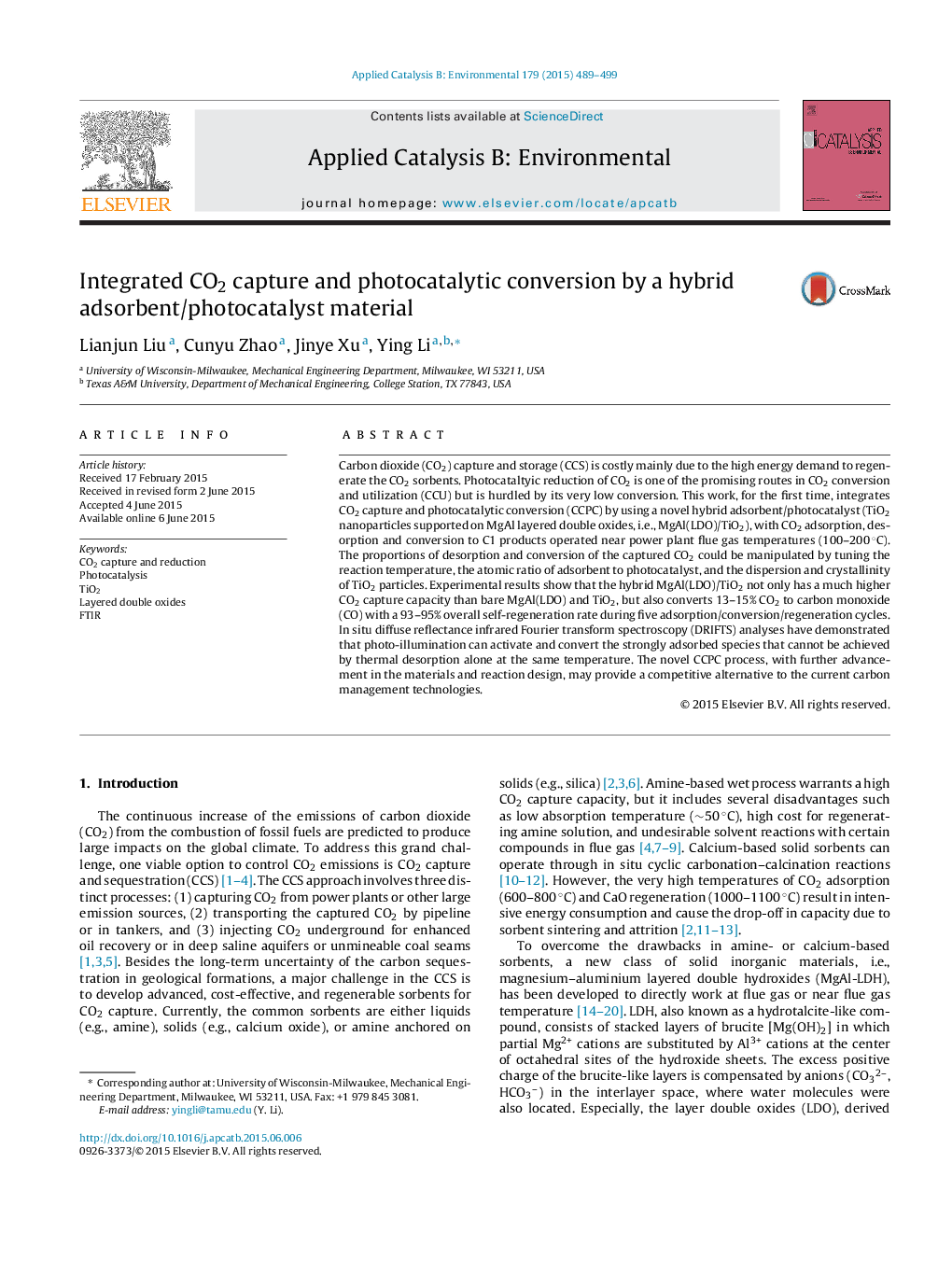| Article ID | Journal | Published Year | Pages | File Type |
|---|---|---|---|---|
| 45479 | Applied Catalysis B: Environmental | 2015 | 11 Pages |
•Hybrid MgAl(LDO)/TiO2 are fabricated for CO2 photoreduction with water vapor.•MgAl(LDO) enhances CO2 adsorption and dispersed TiO2 reduces CO2 to CO.•13 to 15% CO2 conversion efficiency is obtained at flue gas temperature.•The material is self-regenerated after CO2 adsorption/desorption/reduction cycles.•The surface chemistry and reaction mechanism is explored by in situ DRIFTS.
Carbon dioxide (CO2) capture and storage (CCS) is costly mainly due to the high energy demand to regenerate the CO2 sorbents. Photocataltyic reduction of CO2 is one of the promising routes in CO2 conversion and utilization (CCU) but is hurdled by its very low conversion. This work, for the first time, integrates CO2 capture and photocatalytic conversion (CCPC) by using a novel hybrid adsorbent/photocatalyst (TiO2 nanoparticles supported on MgAl layered double oxides, i.e., MgAl(LDO)/TiO2), with CO2 adsorption, desorption and conversion to C1 products operated near power plant flue gas temperatures (100–200 °C). The proportions of desorption and conversion of the captured CO2 could be manipulated by tuning the reaction temperature, the atomic ratio of adsorbent to photocatalyst, and the dispersion and crystallinity of TiO2 particles. Experimental results show that the hybrid MgAl(LDO)/TiO2 not only has a much higher CO2 capture capacity than bare MgAl(LDO) and TiO2, but also converts 13–15% CO2 to carbon monoxide (CO) with a 93–95% overall self-regeneration rate during five adsorption/conversion/regeneration cycles. In situ diffuse reflectance infrared Fourier transform spectroscopy (DRIFTS) analyses have demonstrated that photo-illumination can activate and convert the strongly adsorbed species that cannot be achieved by thermal desorption alone at the same temperature. The novel CCPC process, with further advancement in the materials and reaction design, may provide a competitive alternative to the current carbon management technologies.
Graphical abstractFigure optionsDownload full-size imageDownload as PowerPoint slide
